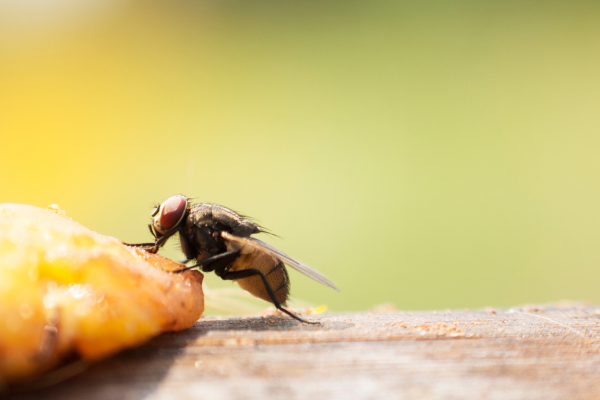Your cart is currently empty!

14 Aug House Fly Behaviour: How Flies Interact With Humans
House flies (Musca domestica) are one of the most common pests found worldwide. These winged insects have developed specific behaviours that allow them to thrive near humans. In this article, we will explore the feeding habits and preferences of house flies, as well as gain insight into their flight patterns and navigation abilities. Understanding these aspects of their behaviour can help us better comprehend their interactions with humans. Let’s learn how flies interact with humans!
Feeding Habits And Preferences:
House flies are known for their voracious appetite and their ability to feed on a wide range of food sources. They have specialized mouthparts designed for sponging up liquids, allowing them to extract nutrients from a variety of substances. Here are some key aspects of their feeding habits:
- Scavengers: House flies are scavengers that seek out decaying organic matter. They are attracted to rotting food, garbage, animal waste, and other decomposing materials. Their preference for such substances is due to the rich nutrient content that aids in their survival and reproduction.
- Regurgitation And Digestion: House flies do not have chewing mouthparts. Instead, they regurgitate digestive enzymes onto their food source, liquefying it, and then suck up the resulting liquid. This process allows them to break down solid substances and extract nutrients more efficiently.
- Sense Of Smell: House flies have a keen sense of smell, which helps them locate potential food sources. They can detect odours from a considerable distance and are particularly attracted to strong, pungent smells associated with decomposing organic matter.
Flight Patterns And Navigation Abilities:
House flies are agile flyers with impressive navigation abilities. Their flight patterns and behaviours are adapted to efficiently locate food sources and find suitable breeding sites. Here are some insights into their flight patterns and navigation abilities:
- Flight Speed: Houseflies can fly at an average speed of around 4.5 miles per hour. They can quickly manoeuvre and change direction, allowing them to navigate through complex environments.
- Visual Navigation: House flies rely on their compound eyes, which provide a wide field of vision, to navigate their surroundings. They are sensitive to movement and can detect changes in light intensity, helping them avoid obstacles and find their way towards potential food sources.
- Phototaxis: House flies exhibit positive phototaxis, meaning they are attracted to light. This behaviour can be observed when they gather near windows or other well-lit areas. However, it is important to note that light alone does not serve as a reliable means of controlling house flies.
- Homing Instinct: House flies possess a remarkable homing instinct that allows them to return to specific locations. This behaviour is especially prominent when they find suitable breeding sites. Flies can navigate back to these sites, ensuring a continuous source of food and favourable conditions for reproduction.
Understanding the feeding habits and preferences of house flies, as well as their flight patterns and navigation abilities, can help us devise effective strategies for controlling and managing their populations. By targeting their food sources and implementing proper sanitation measures, we can reduce their attraction to our living spaces.
Don’t let house flies continue to be a bother in your home. Take action now and invest in Nematodes Globe EFI Sticky Traps from the Environmental Factor. Enjoy the benefits of a fly-free living space and reclaim your peace of mind. Visit the Environmental Factor today to purchase Nematodes Globe EFI Sticky Traps. Say goodbye to the buzzing and the annoyance and embrace a more comfortable and enjoyable environment for you and your loved ones.


